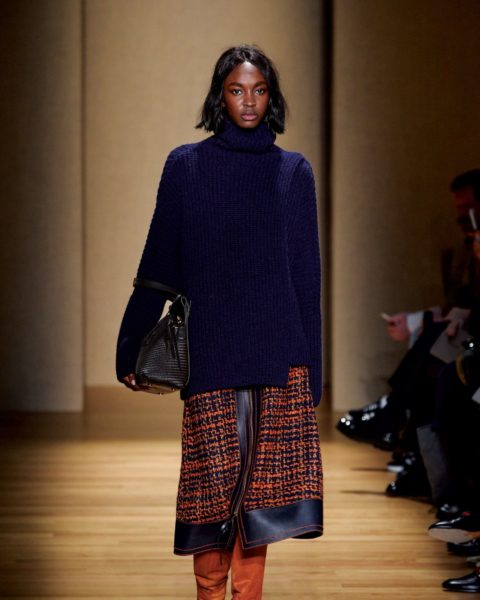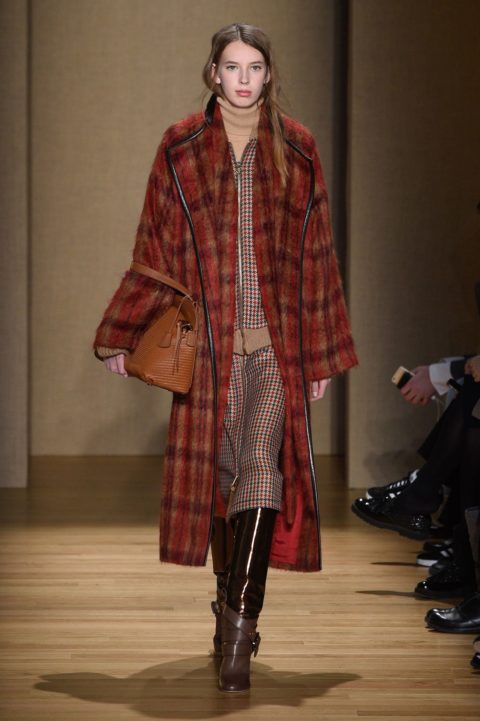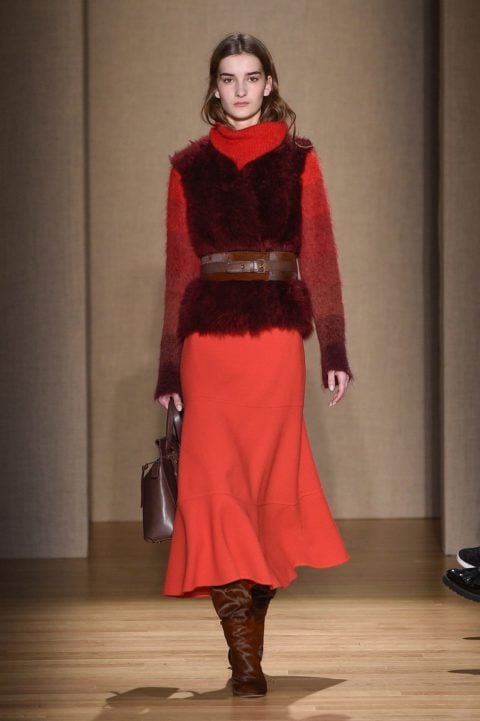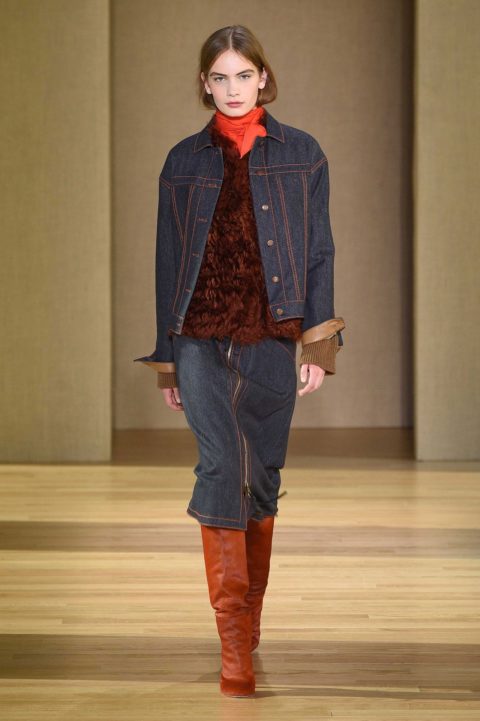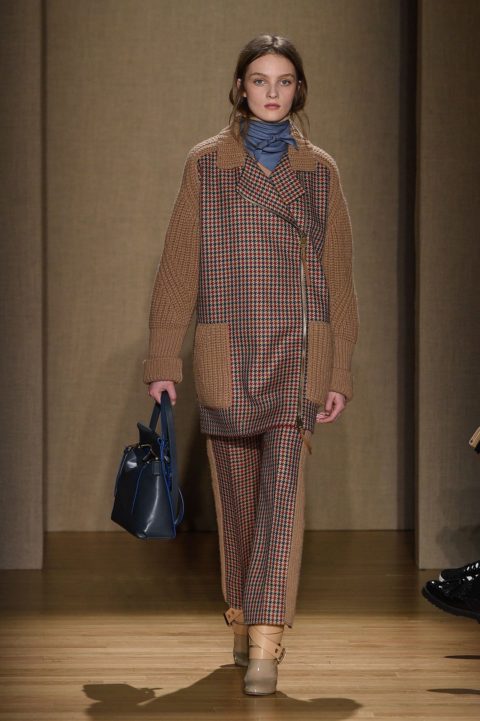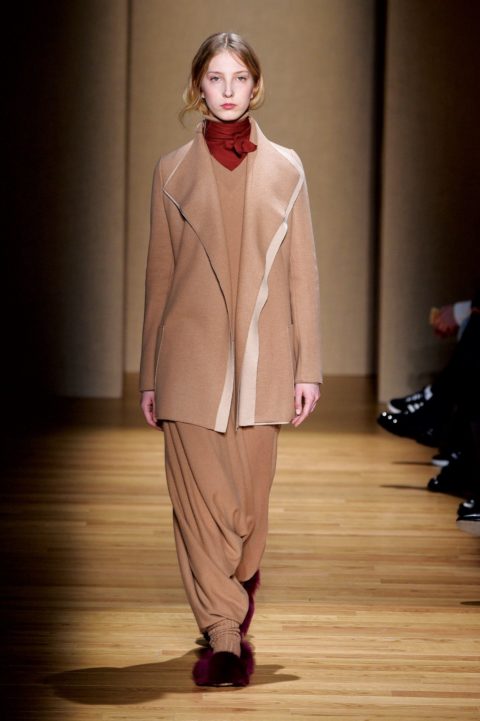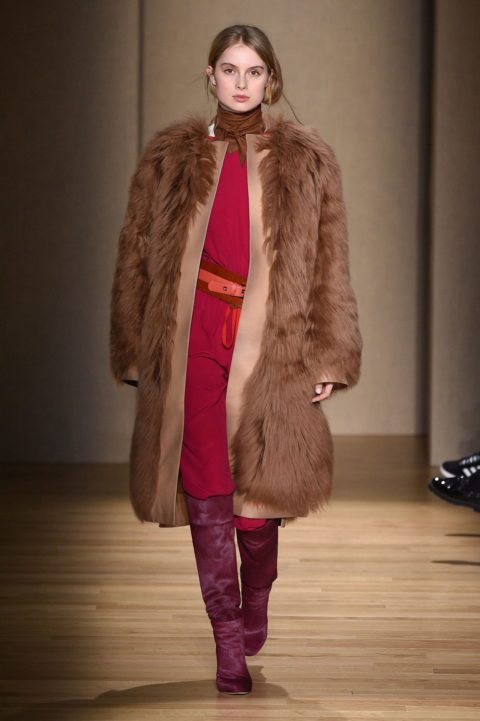The Cashmere Brand You Need To Know About Now
Since the 1950s Agnona has been known for its alpaca and cashmere. Now it's a full-fledged lifestyle brand.
“We’re living in a world of loud fashion right now,” says Simon Holloway, creative director at Agnona, an Italian luxury fashion house. The English-born Holloway is holding a cup of tea in his hand as sun drifts through the label’s bright, modern and massive showroom in Milan. “My vision of what’s editorial is probably a lot more calm and subtle,” he says.
With tea in hand, Holloway invites me to look at an upcoming collection. I’m drawn to a camel hair parka in navy blue with a detachable lining—until I spot a pretty poplin dress on which, he explains, a needle-punching technique was used to create a wool stripe around the perimeter of the skirt. For Fall 2017, Holloway included cocoon coats in alpaca and cashmere, knit maxi-dresses cinched at the waist and, somewhat surprisingly, a denim skirt styled with a rust-coloured shearling vest. “It’s amazing to see people take elevated pieces and dress them up and down at will,” he says.
Agnona is sophisticated Italian sportswear at its contemporary best. Since joining the company in 2016, Holloway has put Agnona, the little sister of Ermenegildo Zegna (the world’s largest menswear brand), on the fashion media’s radar.
When Francesco Ilorini Mo launched the line in 1953, it was mostly a brand used to showcase textiles that he created in his fabric mill located in the foothills of the Biellese Alps, just 90 minutes outside of Milan. His cashmere, alpaca and camel hair attracted couturiers Christian Dior, Balmain, Givenchy and Pierre Cardin in the 1960s. “Back then, these were incredibly rare fabrics,” says Holloway. “Even today, something like alpaca isn’t really a mainstream fibre.” But when couture gave way to ready-to-wear in the 1970s, Agnona expanded into fashion design.
Holloway picks up his iPad and shows me some vintage Agnona ads of models walking through the mountains of Afghanistan in head-to-toe maxi-coats. “They’ve got their heads wrapped in cashmere turbans, and there’s a herd of cashmere goats walking amongst them—it’s insane,” he says with a laugh. “This was an advertorial for placement in Italian Vogue.”
Holloway worked at Jimmy Choo and Tod’s, so his knowledge of design and fashion history is encyclopedic yet deferential. It’s a refreshing outlook to have in an industry that seems intent on finding someone new to reinvent the old. That unique perspective gives him insight into his customer. “She’s definitely a woman rather than a girl,” he says. “She has a kind of timelessness about her. She wants clothes that are classically based but have a certain expression that feels modern.”
The next day I head to the Agnona mill, which is located in Trivero. En route, we pass through a postcard-perfect Italian countryside that is thick with cornfields. When I look out the rear window of the car, I can practically see steam rising off Milan. It’s late June, and daytime temperatures are already in the 30s. When we enter a series of tunnels and my ears start to pop. I realize we are ascending into the foothills of the Alps. Upon arrival at Casa Zegna, a gate opens and we enter grounds that house the Zegna family’s original home as well as a modernist visitor centre. The estate is also surrounded by Oasi Zegna, a 100-square-kilometre nature reserve that is open year-round to the public. In the early part of the 20th century, the Zegna family planted more than half a million conifers plus hundreds of rhododendrons and hydrangeas.
There I meet with Agnona’s full-time archivist, who takes me into a 73-square-metre space that has an entire wall lined with attractive tin boxes stacked on a bookshelf. These boxes contain the original swatches and campaigns that Holloway had shown me the day before.
At the adjacent mill, there are workers who transform massive spools of thick, unruly yarn into cloth to be used for future Agnona collections. The mill recycles its water and is an energy-positive provider, which means it creates more power than it uses and puts the excess back into the grid.
Machines do much of the work, but one of the final steps—the mending process—is still done by hand, and the fabrics are carefully inspected three times for any imperfections. “Louis Vuitton has the trunk; Ferragamo, the shoes,” says Holloway. “The thing that differentiates Agnona is the prowess in textiles. There are very few born in textiles.”

